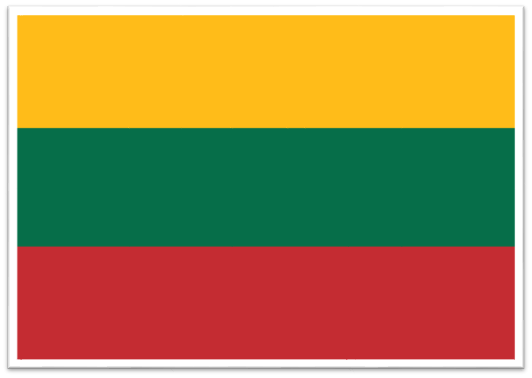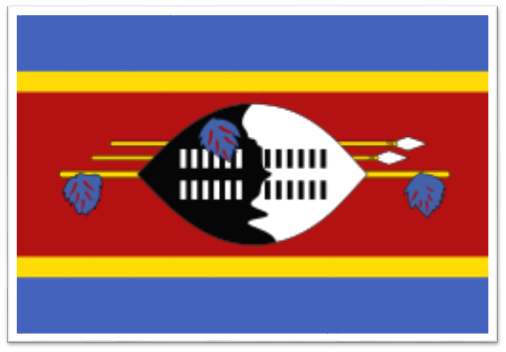Crab Back
Crab Back is a delectable and indulgent dish that holds a special place in the culinary repertoire of Grenada. This beloved Grenadian delicacy showcases the island's abundant seafood and rich culinary heritage, offering a unique and memorable dining experience for locals and visitors alike.
At its core, Crab Back consists of succulent crab meat mixed with a medley of aromatic herbs, spices, and seasonings, then stuffed back into the shell of the crab and baked until golden brown and bubbling. The result is a dish that is as visually stunning as it is delicious, with layers of flavour and texture that delight the senses.
One of the defining characteristics of Crab Back is its rich and savoury flavour profile. The crab meat is typically seasoned with a blend of local spices such as thyme, parsley, garlic, onions, and hot peppers, which infuse the dish with a depth of flavour that is uniquely Grenadian.
Crab Back is not just a dish; it is a culinary experience that celebrates Grenada's coastal bounty and the skill and creativity of its chefs. It is often enjoyed as a special occasion meal or as a treat during festive gatherings and celebrations, where its luxurious taste and elegant presentation make it a standout dish.
In Grenada, Crab Back is readily available at upscale restaurants, beachside eateries, and seafood markets, where it is prepared fresh and served with a side of rice, salad, or fried plantains. Its indulgent flavours and sophisticated presentation make it a popular choice for discerning diners looking to savour the best of Grenadian cuisine.
Beyond its culinary appeal, Crab Back holds symbolic significance in Grenadian culture, often enjoyed as a symbol of abundance, prosperity, and hospitality. It is a dish that brings people together, evoking feelings of warmth, camaraderie, and shared enjoyment.
With its sumptuous taste, elegant presentation, and rich cultural heritage, Crab Back is a beloved staple of Grenadian cuisine. It is a dish that embodies the spirit of the island, offering a taste of tradition, a touch of luxury, and a glimpse into the vibrant tapestry of Caribbean flavours.
Lambie Souse
Lambie Souse is a traditional Grenadian dish that showcases the island's love for seafood and bold flavours. This refreshing and tangy seafood salad is beloved by locals and visitors alike, offering a unique and delicious taste of Grenadian cuisine.
At its core, Lambie Souse features conch, known locally as "lambie," marinated in lime juice and seasoned with onions, peppers, herbs, and spices. The conch is typically tenderised and thinly sliced before being combined with the zesty marinade, allowing the flavours to meld and develop over time.
One of the defining characteristics of Lambie Souse is its bright and vibrant flavour profile. The tangy acidity of the lime juice is balanced by the sweetness of the onions and the heat of the peppers, creating a harmonious blend of sweet, sour, and spicy notes that dance on the palate with each bite.
Lambie Souse is not just a dish; it is a culinary experience that celebrates Grenada's coastal bounty and the creativity of its chefs. It is often enjoyed as a refreshing appetiser or light meal on hot days, providing a burst of flavour and a welcome respite from the heat.
In Grenada, Lambie Souse is readily available at local eateries, beachside stalls, and seafood markets, where it is prepared fresh and served with a side of bread or crackers. Its refreshing flavours and vibrant colours make it a popular choice for lunch, dinner, or as a snack on the go.
Beyond its culinary appeal, Lambie Souse holds cultural significance in Grenadian cuisine, often enjoyed as a symbol of island life, maritime heritage, and the close connection between Grenadians and the sea. It is a dish that evokes feelings of nostalgia, community, and shared enjoyment.
With its tangy taste, refreshing texture, and rich cultural heritage, Lambie Souse is a beloved staple of Grenadian cuisine. It is a dish that embodies the spirit of the island, offering a taste of tradition, a touch of indulgence, and a glimpse into the vibrant tapestry of Caribbean flavours.
Pelau
Pelau is a beloved and iconic dish in Grenada, celebrated for its hearty and flavourful combination of rice, meat, pigeon peas, and aromatic spices. This one-pot wonder is a staple of Grenadian cuisine, cherished by locals and visitors alike for its comforting taste and cultural significance.
At its core, Pelau is a rice-based dish cooked with a medley of ingredients that reflect Grenada's rich agricultural bounty and diverse culinary heritage. The dish typically features chicken, beef, or seafood, along with pigeon peas, carrots, pumpkin, bell peppers, onions, and garlic, all simmered together in a fragrant broth infused with coconut milk and Caribbean spices.
One of the defining characteristics of Pelau is its rich and complex flavour profile. The combination of meat, vegetables, and spices creates a symphony of taste and texture, with each ingredient contributing its own unique flavour to the dish. The caramelisation of the meat and vegetables adds depth and richness, while the coconut milk infuses the rice with a creamy sweetness that balances the savoury elements perfectly.
Pelau is not just a meal; it is a culinary experience that celebrates Grenada's cultural heritage and the spirit of community and togetherness. It is often enjoyed at gatherings, celebrations, and special occasions, where it serves as a symbol of hospitality, abundance, and shared enjoyment.
In Grenada, Pelau is a popular dish served at local eateries, roadside stalls, and family gatherings, where it is prepared with love and care using traditional recipes passed down through generations. Its hearty and satisfying nature makes it a favourite choice for lunch or dinner, appealing to diners of all ages.
Beyond its culinary appeal, Pelau holds symbolic significance in Grenadian culture, often enjoyed as a symbol of unity and resilience. It is a dish that brings people together, bridging divides and fostering connections through the shared experience of good food and good company.
With its rich flavours, comforting textures, and cultural significance, Pelau is a beloved staple of Grenadian cuisine. It is a dish that embodies the spirit of the island, offering a taste of tradition, a touch of warmth, and a glimpse into the vibrant tapestry of Caribbean flavours.
Breadfruit Cou Cou
Breadfruit Cou Cou is a traditional Grenadian dish that showcases the island's culinary ingenuity and reliance on locally available ingredients. This hearty and comforting dish is beloved by locals and visitors alike for its rich flavours, creamy texture, and cultural significance.
At its core, Breadfruit Cou Cou is a savoury side dish made from breadfruit, a starchy tropical fruit that grows abundantly in Grenada. The fruit is boiled until tender, then mashed and combined with cornmeal, coconut milk, onions, garlic, and aromatic herbs and spices such as thyme and bay leaves. The mixture is then cooked until thick and creamy, resulting in a smooth and velvety consistency that is reminiscent of polenta or mashed potatoes.
One of the defining characteristics of Breadfruit Cou Cou is its versatility. While breadfruit is the star ingredient, the dish can be adapted and customised to suit individual preferences and tastes. Some variations may include the addition of okra for added texture, or the inclusion of salted fish or meat for extra flavour and protein.
Breadfruit Cou Cou is not just a side dish; it is a culinary experience that celebrates Grenada's agricultural heritage and the creativity of its cooks. It is often enjoyed as a comforting accompaniment to main dishes such as fish, chicken, or stewed meats, adding depth and richness to the meal.
In Grenada, Breadfruit Cou Cou is a staple of local cuisine, commonly served at family gatherings, celebrations, and festive occasions. It is prepared with care and attention to detail, using traditional recipes passed down through generations, and enjoyed by diners of all ages.
Beyond its culinary appeal, Breadfruit Cou Cou holds symbolic significance in Grenadian culture, often enjoyed as a symbol of resilience and resourcefulness. It is a dish that reflects Grenada's ability to make the most of its natural resources and turn humble ingredients into something truly delicious and satisfying.
With its rich flavours, creamy texture, and cultural significance, Breadfruit Cou Cou is a beloved staple of Grenadian cuisine. It is a dish that embodies the spirit of the island, offering a taste of tradition, a touch of comfort, and a glimpse into the vibrant tapestry of Caribbean flavours.
Fish and Fungi
Fish and Fungi is a classic dish in Grenadian cuisine that showcases the island's love for seafood and hearty, comforting meals. This delicious and satisfying dish combines tender fish with a soft and creamy side dish known as fungi, creating a meal that is both flavourful and nourishing.
At its core, Fish and Fungi features fresh fish, such as snapper, mahi-mahi, or kingfish, which is typically marinated in a blend of herbs, spices, and citrus juice before being grilled, baked, or fried until perfectly cooked. The fish is then served alongside fungi, a soft and smooth side dish made from cornmeal, water, and seasoning, similar to polenta.
One of the defining characteristics of Fish and Fungi is its simplicity and versatility. While the fish is often seasoned with local spices such as thyme, garlic, and hot peppers, the fungi can be flavoured with a variety of ingredients, including coconut milk, okra, or even salted meat or fish for added flavour.
Fish and Fungi is not just a meal; it is a culinary experience that celebrates Grenada's coastal bounty and the creativity of its cooks. It is often enjoyed as a comforting and satisfying meal for lunch or dinner, providing a taste of tradition and a glimpse into the island's rich culinary heritage.
In Grenada, Fish and Fungi is a staple of local cuisine, commonly served at family gatherings, beachside restaurants, and roadside stalls. It is prepared with care and attention to detail, using fresh, locally sourced ingredients, and enjoyed by diners of all ages.
Beyond its culinary appeal, Fish and Fungi holds cultural significance in Grenadian society, often enjoyed as a symbol of community and togetherness. It is a dish that brings people together, fostering connections and creating memories that last a lifetime.
With its delicious flavours, satisfying textures, and cultural significance, Fish and Fungi is a beloved staple of Grenadian cuisine. It is a dish that embodies the spirit of the island, offering a taste of tradition, a touch of comfort, and a glimpse into the vibrant tapestry of Caribbean flavours.








